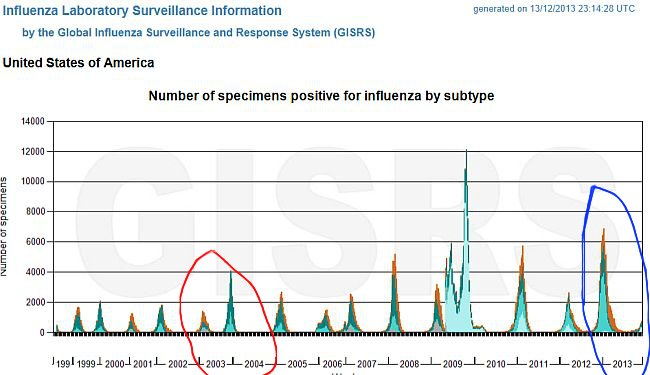News
01-27-2013
 New Books
New Books
Visit the Books Page on the homepage to See our Latest Releases
 New Books
New BooksVisit the Books Page on the homepage to See our Latest Releases
Sunspots and Influenza Pandemics Return to Homepage
Related Article:
The Future of Ebola and Building your Resistance to the Virus
2001 happens to be just at the end of a major peak of sunspot numbers. Sunspot Cycle 23 peaked in 2001. As the sunspot numbers peak and begin to decline, this is a period where many of the world's influenza pandemics have also occurred. Just to give one example, the Dalton Sunspot Minimum which started in 1790 and ended in 1830 was one of the worst influenza pandemics in decades. 1793 was the year of the Yellow Fever Epidemic. The Dalton Minimum was also known as the Year Without a Summer, because more sunspots create warmer temperatures on earth. The reason this is such a powerful period is because as the sunspots decline, they release short "Bursts" of energy, which creates major events that affect large numbers of the population. If we take a close look at the photo, we can see the next time this occurs is 2013 into early 2014.

Connecting the Dots to Health
Now let's look at the sunspot numbers and compare them to years where influenza was higher than average. As we can see with the image on the left, the years 2003 and 2013 are both periods where sunspots have peaked and are starting to decline.
And if we compare this to the number of influenza cases below we see that these are both periods where Influenza has infected a higher than average number of people.

Graphic Image Courtesy of Who.Int. You can view the database for yourself at the address below:
http://gamapserver.who.int/gareports/Default.aspx?ReportNo=7
2013 also happens to have the the first reported case of bubonic plague outbreak in 30 years Now there is another influenza spike in 2007. This method is not perfect, but we can say with some degree of accuracy that after the peak of a sunspot cycle, people are more susceptible to influenza infection.
Solar Forecasting Resources:
Forecasting Tools 1
Forecasting Tools 2
Thank You for visiting our site and reading our articles and new update. If this information has helped you or someone you know, please consider contributing to this site. Your contribution will ensure the continued publishing of unique and quality articles at no cost to all of our visitors and regular readers.
